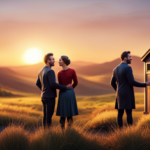Beginners Guides
How Do You Qualify For A Tiny House For Dream Center

Welcome to the Dream Center, where dreams are molded into the reality of compact homes. Just as a key opens up new worlds of opportunity, our Tiny House Program provides people with the chance to explore the life-changing benefits of living minimally. Whether your goal is financial stability, finding a community that supports you, or leading a sustainable lifestyle, our initiative is crafted to assist you in qualifying for a tiny house that will serve as your haven.
In this article, we will guide you through the process of qualifying for a tiny house at the Dream Center. With our knowledgeable and experienced approach, we will delve into the financial eligibility requirements, the commitment to the community, the application process, and the evaluation and selection criteria. We will also explore the importance of embracing a minimalist lifestyle, building a supportive network, and practicing sustainable living.
So, if you are ready to embark on a journey towards a simpler and more fulfilling life, let us be your compass. Together, we will navigate the path to qualifying for a tiny house at the Dream Center and enjoy the incredible experience that awaits you.
Key Takeaways
- Dream Center’s Tiny House Program provides affordable housing options for individuals who meet income criteria.
- Applicants must demonstrate financial stability, a commitment to community, and a genuine desire to live in a tiny house.
- Documentation, such as pay stubs, tax returns, and bank statements, is needed to prove income eligibility.
- Embracing a minimalist lifestyle and sustainable living practices are essential for being considered for a tiny house at Dream Center.
Explore the Tiny House Program at Dream Center
So, you’re ready to explore the Tiny House Program at Dream Center and envision yourself living in your very own cozy, eco-friendly sanctuary. This unique program offers an exciting opportunity for individuals like you who are looking for a simpler, more sustainable lifestyle.
But before diving into the details, let’s talk about the financial eligibility requirements.
Dream Center’s Tiny House Program aims to provide affordable housing options to individuals who meet certain income criteria. To qualify, you must demonstrate that your income falls within the specified range set by the program. This ensures that the program is accessible to those who truly need it.
Additionally, Dream Center requires applicants to provide proof of financial stability, such as employment verification and credit history. They want to ensure that you have the means to sustain yourself and meet the financial obligations associated with owning a tiny house.
Now that you have a better understanding of the financial eligibility requirements, you can begin the exciting journey of exploring the Tiny House Program at Dream Center. From the initial application process to the final steps of becoming a proud tiny homeowner, Dream Center will guide you every step of the way.
So, let’s dive in and discover how you can make your dream of living in a tiny house a reality.
Financial Eligibility Requirements
To qualify for the Tiny House Program at Dream Center, you’ll need to determine whether you meet the income limits set by the organization. This is an important step in the application process as it helps ensure that the program is reaching those who truly need affordable housing.
Additionally, you’ll need to understand the documentation required for proof of income, such as pay stubs, tax returns, and bank statements. Providing accurate and thorough documentation is crucial to demonstrate your financial eligibility for the program.
Determine the Income Limits for Qualification
First things first, if you wanna score a tiny house at the dream center, you’ll need to know the income limits for qualification.
To explore income thresholds and determine your financial qualifications, here are a few key points to keep in mind:
- Income limits vary depending on the location and specific program requirements.
- The Dream Center uses the Department of Housing and Urban Development (HUD) guidelines to determine income eligibility.
- These guidelines take into account the total household income, including wages, tips, social security benefits, and any other sources of income.
- Income limits are typically based on the percentage of the area median income (AMI) for your specific location.
Understanding the documentation needed for proof of income is crucial in the qualification process.
Now, let’s delve into the next section and learn about the necessary documentation you’ll need to provide.
Understand the Documentation Needed for Proof of Income
Now, let’s dive into the documentation you’ll need to show to prove your income eligibility.
When applying for a tiny house at the Dream Center, it’s crucial to provide proof of income to ensure you meet the income requirements. The Dream Center wants to ensure that those who are in need are given the opportunity to benefit from their program.
To prove your income, you will typically need to provide documents such as pay stubs, tax returns, and bank statements. These documents will help the Dream Center assess your financial situation and determine your eligibility. It’s important to gather these documents beforehand to expedite the application process.
Once you have gathered all the necessary proof of income, you can move on to the next step: demonstrating your commitment to the community.
Commitment to the Community
To be considered for a tiny house at the Dream Center, you must demonstrate a strong desire to be an active and engaged member of the community. This means being willing to contribute your time, skills, and resources to the betterment of the Dream Center and its residents.
You should also understand and be prepared to meet the expectations of community involvement, which may include attending regular meetings, participating in community events, and supporting your fellow residents.
Demonstrate a Strong Desire to Be a Part of the Dream Center Community
Imagine immersing yourself in the vibrant and supportive Dream Center community, where your strong desire to be a part of this incredible movement is met with open arms and endless opportunities.
At the Dream Center, community engagement is at the core of our values. We believe that active participation and a genuine commitment to the community are essential for creating a thriving and supportive environment.
To demonstrate your strong desire to be a part of the Dream Center community, we encourage you to get involved in various community activities, such as volunteering, attending events, and actively participating in our programs. By actively engaging with the Dream Center community, you not only show your dedication but also develop meaningful connections with like-minded individuals.
Understanding the expectations of community involvement is crucial as it allows you to fully embrace the Dream Center experience and contribute to the collective growth and success of our community.
Understand the Expectations of Community Involvement
Get ready to jump headfirst into the vibrant and supportive Dream Center community, where you’ll need to understand what we expect from your community involvement if you want to be a part of this incredible movement.
Here are three key aspects to consider when it comes to community engagement and volunteer opportunities at the Dream Center:
-
Active Participation: We value individuals who actively engage with the community by attending regular meetings, events, and workshops. This demonstrates your commitment to the Dream Center’s mission and shows your dedication to fostering a thriving community.
-
Volunteer Commitment: Volunteering plays a crucial role in the Dream Center community. We encourage residents to actively participate in various volunteer opportunities to support our programs and initiatives. This not only helps to build a strong sense of community but also allows us to make a positive impact on the lives of others.
-
Collaborative Spirit: We believe in the power of collaboration and teamwork. It is essential for Dream Center residents to embrace a collaborative spirit, working together with fellow community members to create a supportive and inclusive environment.
Understanding these expectations will help you navigate the application process seamlessly, as we assess your suitability for the Dream Center community.
Application Process
The first step in qualifying for a tiny house at the Dream Center is to complete the application process. This is where you will provide all the necessary information about yourself, your financial situation, and your level of community involvement. The Dream Center wants to ensure that those who are selected for a tiny house are not only in need of affordable housing but also committed to being active members of the community. To help you understand the expectations, here is a table that outlines the financial requirements and community involvement criteria:
| Financial Requirements | Community Involvement |
|---|---|
| Income below a certain threshold | Willingness to participate in community events |
| Proof of stable employment or income source | Regular volunteering at the Dream Center |
| Capability to pay monthly utility bills | Active engagement with neighbors |
By completing the application process and meeting these criteria, you will be one step closer to being considered for a tiny house at the Dream Center. In the next section, we will discuss the evaluation and selection process.
Evaluation and Selection
Once you’ve completed the application process, the next step is for the Dream Center to evaluate and select candidates for their incredible tiny homes. The evaluation process is thorough and designed to ensure that the individuals chosen are the best fit for the community.
The Dream Center carefully reviews each application, taking into consideration factors such as financial stability, commitment to community participation, and overall suitability for tiny house living.
During the evaluation process, the Dream Center looks for applicants who demonstrate a genuine desire to be part of a tight-knit community. This is because living in a tiny house requires a certain level of cooperation and respect for your neighbors. The Dream Center also takes into account an applicant’s financial stability, as they want to ensure that the chosen individuals will be able to afford the ongoing costs associated with tiny house living.
Once the evaluation process is complete, the Dream Center selects candidates who meet their criteria and are deemed the best fit for the community. These individuals are then notified and begin preparing for the exciting journey of living in a tiny house.
Preparing for the tiny house journey, you’ll receive guidance and support from the Dream Center to help you transition smoothly into your new home.
Preparing for the Tiny House Journey
Start preparing yourself for the incredible journey of living in a tiny home by embracing the guidance and support provided by the Dream Center. This organization is dedicated to helping individuals like you achieve their dream of living in a tiny house. They have a thorough process in place to ensure that only those who are truly committed and prepared for this lifestyle are selected.
To prepare for the tiny house journey, you will need to go through a series of steps and evaluations. The Dream Center will assess your financial readiness, including your ability to make monthly payments and maintain the tiny house. They will also evaluate your commitment to a minimalist lifestyle and your understanding of the challenges and benefits it brings. Additionally, you will need to demonstrate your ability to handle the responsibilities that come with living in a tiny home, such as maintaining the property and adhering to community guidelines.
By following the guidance and support provided by the Dream Center, you can confidently embark on your journey towards living in a tiny home. Embrace the opportunity to simplify your life, reduce your ecological footprint, and experience the freedom that comes with living in a minimalist space.
Transitioning into the subsequent section about embracing a minimalist lifestyle, you will discover that it is not just about downsizing your physical possessions, but also about finding joy in the simplicity and freedom that comes with living with less.
Embracing a Minimalist Lifestyle
Are you ready to embrace a minimalist lifestyle? Living with less can have numerous benefits, such as reducing stress, increasing freedom, and improving overall well-being.
Discovering strategies for simplifying and decluttering your life will not only help you create a more organized and peaceful living space, but it will also enable you to focus on what truly matters to you.
By implementing these techniques, you can take control of your environment and create a sense of calm and clarity in your daily life.
Learn about the Benefits of Living with Less
Discover the numerous advantages of embracing a minimalist lifestyle in a tiny house, where studies show that people who live with less experience a significant decrease in stress levels by up to 68%. By downsizing and adopting a minimalist approach, you can simplify your life and enjoy a range of benefits. Here are a few reasons why living with less can be so beneficial:
| Benefits of Downsizing | Minimalist Living Tips |
|---|---|
| Reduced financial burden | Focus on experiences rather than possessions |
| Increased freedom and mobility | Declutter and organize regularly |
| Lower environmental impact | Practice mindfulness and gratitude |
| Enhanced mental clarity and creativity | Cultivate a sense of contentment |
Embracing a minimalist lifestyle not only allows you to create a more peaceful and serene living environment, but it also provides a platform for personal growth and self-discovery. Now, let’s discover strategies for simplifying and decluttering your life.
Discover Strategies for Simplifying and Decluttering Your Life
Take a moment to explore effective strategies for simplifying and decluttering your life, so you can create a space that promotes peace and tranquility.
Simplifying life is all about making conscious choices to reduce the unnecessary and focus on what truly matters. Start by decluttering your physical space. Begin with one area or room at a time, sorting items into categories of keep, donate, or discard. Be ruthless in letting go of things that no longer serve a purpose or bring you joy.
Creating a system for organization, such as using storage bins or labeling shelves, can help maintain a clutter-free environment. Additionally, simplify your digital life by deleting unnecessary files and unsubscribing from email lists that no longer interest you.
By simplifying and decluttering, you are creating a foundation for a peaceful and balanced life. As you embark on this journey, building a supportive network will provide the encouragement and guidance you need to continue thriving.
Building a Supportive Network
Building a supportive network is crucial in order to qualify for a tiny house at Dream Center, as it provides individuals with the necessary resources and connections to successfully navigate the application process. Building relationships and finding support from like-minded individuals and organizations can greatly enhance your chances of being accepted into the Dream Center community.
Here are three key ways to build a supportive network:
-
Attend community events and workshops: By participating in these events, you can meet potential allies who can offer guidance and support throughout the application process. These events also provide opportunities to learn from experienced individuals who have successfully gone through the same journey.
-
Join online forums and social media groups: Connecting with others who are also interested in living in a tiny house can provide valuable insights and advice. Online communities can offer a wealth of information about the application process, funding options, and sustainable living practices.
-
Seek out local resources: Engaging with local organizations and initiatives focused on affordable housing and sustainable living can help you build connections with individuals who may have knowledge or connections that can benefit your application. These resources may also provide workshops or seminars that can educate you about sustainable living practices.
Building a supportive network not only increases your chances of qualifying for a tiny house at Dream Center, but it also helps you establish a strong foundation for sustainable living practices.
Sustainable Living Practices
Embrace sustainable living practices to create a more environmentally-friendly and self-sufficient lifestyle, fostering a healthier and more sustainable community. When it comes to designing and building your tiny house for the Dream Center, it’s essential to prioritize sustainability.
By incorporating eco-friendly practices into your construction and lifestyle, you can reduce your carbon footprint and contribute to a greener future.
One of the key aspects of sustainable design is utilizing renewable energy sources. Consider installing solar panels on your tiny house to generate electricity. This not only reduces your reliance on traditional power grids but also helps you save on energy costs in the long run. Additionally, implementing energy-efficient appliances and insulation materials can further minimize your energy consumption.
Another important aspect of sustainable living practices is water conservation. Install low-flow fixtures in your tiny house to reduce water usage. Consider implementing a rainwater harvesting system to collect and reuse rainwater for non-potable purposes such as watering plants or flushing toilets.
Furthermore, embrace the principles of recycling and waste reduction. Opt for eco-friendly construction materials, such as reclaimed wood or recycled steel. Implement a composting system for organic waste, which can later be used as nutrient-rich soil for gardening.
By adopting sustainable design and eco-friendly practices, you can create a tiny house that not only meets your needs but also minimizes its impact on the environment.
With these practices in place, you can now transition into enjoying the tiny house experience and all the benefits it brings to your life.
Enjoying the Tiny House Experience
When it comes to enjoying the tiny house experience, you’ll quickly discover the freedom and flexibility that comes with living in a smaller space.
Embrace the simplicity and minimalist lifestyle as you find creative ways to maximize the limited space available to you. From clever storage solutions to multi-purpose furniture, you’ll be amazed at how much functionality can be packed into a tiny house.
Personalize your home with unique decor and design choices that reflect your style and personality, making your tiny house truly feel like a home.
Embrace the Freedom and Flexibility of Living in a Tiny House
Imagine the freedom and flexibility you’ll experience living in a tiny house, where you can truly embrace a minimalist lifestyle. With limited square footage, you’ll be liberated from the burden of excessive possessions and unnecessary clutter.
The freedom to live with less allows you to focus on what truly matters to you, whether it’s pursuing your passions, spending time with loved ones, or exploring the world around you.
Additionally, the flexibility of a tiny house enables you to move and travel with ease, as these compact dwellings are designed to be portable. You can enjoy the freedom of choosing where you want to live, whether it’s in a bustling city or a serene countryside.
Embracing the tiny house lifestyle opens up a world of possibilities, where you can customize and personalize your home to reflect your unique personality and style. Discover creative ways to maximize space and make your tiny house feel like home, all while enjoying the freedom and flexibility it offers.
Discover Creative Ways to Maximize Space and Personalize Your Home
Get ready to unleash your creativity and transform your tiny house into a personalized oasis, where every inch of space is utilized to its fullest potential and reflects your unique style and personality.
Did you know that according to a study, 82% of tiny house owners reported feeling more content and satisfied with their living arrangements compared to traditional homeowners?
When it comes to maximizing storage in a tiny house, it’s all about thinking outside the box. Consider utilizing vertical space by installing shelves or hooks on walls and using storage bins with labels to keep everything organized. Additionally, look for furniture that serves multiple purposes, such as a sofa that can also be used as a storage unit.
Customizing the interiors of your tiny house is another exciting opportunity to make it truly your own. Choose colors, textures, and patterns that resonate with your personal style and add unique touches like artwork or plants to create a cozy and inviting atmosphere.
Remember, the key is to make every square inch count!
Frequently Asked Questions
Can I bring my own tiny house to the Dream Center program?
Yes, you can bring your own tiny house to the Dream Center program. However, before doing so, it’s important to ensure that your tiny house meets all building regulations and codes. This includes adhering to safety standards for electrical and plumbing systems. By bringing your own tiny house, you can experience the numerous benefits of tiny house living, such as reduced environmental impact, lower cost of living, and the ability to live a minimalist lifestyle.
How long does the application process typically take?
The average processing time for the Dream Center’s tiny house application is typically around 4-6 weeks. During this time, the Dream Center reviews all required documents to ensure eligibility.
These documents may include proof of income, identification, and a completed application form. It’s important to submit all necessary paperwork accurately and in a timely manner to avoid any delays in the application process.
Rest assured, our experienced team is detail-oriented and will guide you through each step of the way.
Are there any age restrictions to qualify for the tiny house program?
Age limitations and eligibility requirements are important factors to consider when applying for the tiny house program at Dream Center. To qualify, individuals must meet certain age criteria, which may vary depending on the specific program. These requirements ensure that the resources and support provided by Dream Center are allocated to those who can benefit the most.
It’s crucial to review the eligibility criteria thoroughly before applying to ensure that you meet the necessary age restrictions.
What happens if I am selected for the program but later decide it’s not for me?
So you’ve been selected for the program but now you’re having second thoughts? Well, lucky for you, the Dream Center understands that not everyone’s dreams are set in stone. If you find that the tiny house program isn’t for you, they offer alternative options.
Whether it’s exploring a different program within the Dream Center or seeking assistance elsewhere, they’re committed to helping you find the best path for your dreams.
Is there a waiting list for the tiny house program at Dream Center?
Yes, there’s a waiting list for the tiny house program at Dream Center. The program has specific eligibility criteria that must be met to qualify for a tiny house. These criteria may vary, but typically include factors like income level, housing needs, and commitment to the program. Once you meet the eligibility criteria, you can join the waiting list and you’ll be contacted when a spot becomes available.
Conclusion
Congratulations! You’re now equipped with the knowledge and experience to embark on the exciting journey of qualifying for a tiny house at Dream Center. By embracing a minimalist lifestyle, building a supportive network, and adopting sustainable living practices, you’ll not only enjoy the unique and fulfilling experience of living in a tiny house, but also contribute to the vibrant community at Dream Center.
So, what are you waiting for? Take the first step towards your dream by applying today and unlock the door to a whole new world of possibilities!
Hi, I’m Emma. I’m the Editor in Chief of Tiny House 43, a blog all about tiny houses. While tree houses are often associated with childhood, they can be the perfect adult retreat. They offer a cozy space to relax and unwind, surrounded by nature. And since they’re typically built on stilts or raised platforms, they offer stunning views that traditional homes simply can’t match. If you’re looking for a unique and romantic getaway, a tree house tiny house might just be the perfect option.
Beginners Guides
How Do I Get Rid of Tiny White Bugs on My House Plants

- Health risks associated with tiny white bugs on house plants.
- Effective methods to prevent infestations of tiny white bugs on house plants
I am facing a small white insect issue with my indoor plants, and it is really frustrating me! These annoying bugs seem to be multiplying quickly, causing damage to my precious plants.
But fear not, my fellow plant enthusiasts, for I’ve done my research and found some effective solutions to eliminate these unwelcome guests.
In this article, I’ll share with you the knowledge and remedies I’ve discovered, so you too can reclaim your bug-free, thriving indoor garden.
Key Takeaways
- Aphids, mealybugs, and whiteflies are common types of tiny white bugs found on house plants.
- Lack of proper plant care, overwatering, and bringing infested plants indoors can lead to bug infestations.
- Homemade insecticides using water and dish soap or neem oil can suffocate and disrupt the feeding patterns of pests.
- Regular cleaning and inspection routines help detect and address pest issues early on.
Identifying the Tiny White Bugs on Your House Plants
I can easily spot the tiny white bugs on my house plants by carefully examining the leaves and stems. The most common species of these pests found on house plants are aphids, mealybugs, and whiteflies.
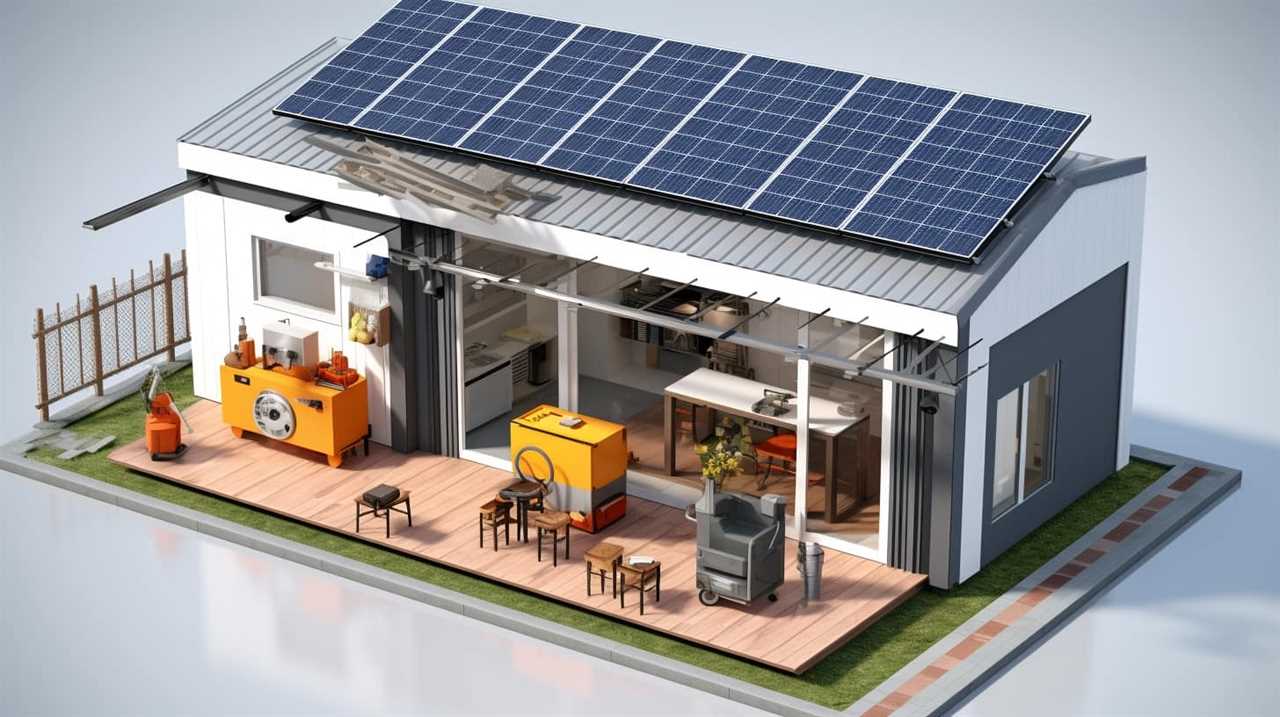
Aphids are small, pear-shaped insects that cluster on new leaves and buds.
Mealybugs are covered in a white, waxy substance and can be found on the undersides of leaves and in leaf axils.
Whiteflies, as the name suggests, are tiny white insects that fly around when disturbed.
An infestation of these tiny white bugs can cause significant damage to your house plants. Signs of infestation include yellowing leaves, stunted growth, distorted foliage, and a sticky residue called honeydew on the leaves. Furthermore, these pests can transmit plant diseases, weaken the plant’s immune system, and attract other pests.
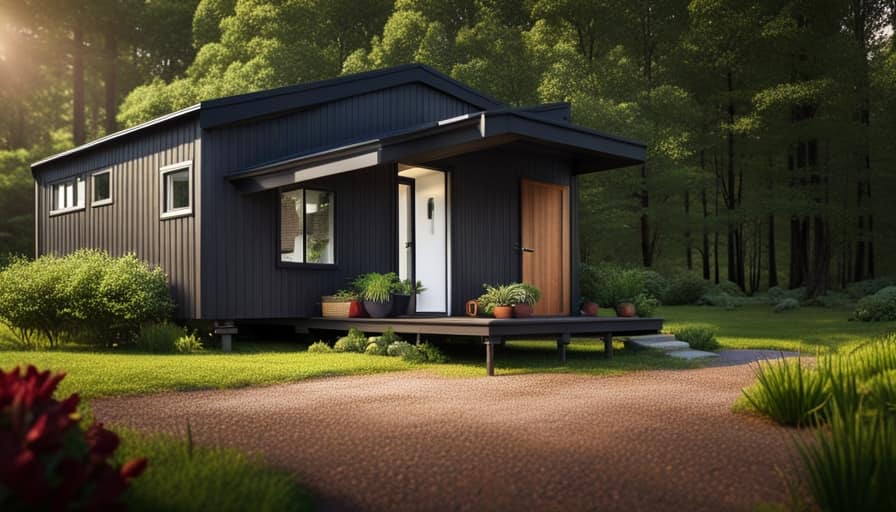
Understanding the causes of infestation is crucial in effectively getting rid of these tiny white bugs on your house plants.
Understanding the Causes of Infestation
Understanding the causes of infestation is essential in effectively eliminating these tiny white bugs on my house plants. Here are a few key factors to consider:
- Lack of proper plant care: Neglecting to provide adequate water, sunlight, and nutrients can weaken plants, making them more susceptible to bug infestations.
- Overwatering: Excessive moisture can create a favorable environment for pests like aphids and mealybugs.
- Bringing infested plants indoors: Introducing plants from outside without proper inspection can bring unwanted bugs into your home.
Recognizing the signs of bug damage is crucial for preventing infestation. Look out for yellowing, wilting leaves, sticky residue on leaves and stems, and tiny white bugs crawling on the plant’s surface.
Now that we understand the causes of infestation, let’s explore natural remedies to eliminate these pesky bugs.

Natural Remedies to Eliminate the Bugs
To effectively get rid of these tiny white bugs on my house plants, I’ll need to rely on natural remedies that can eliminate them without harming the plants.
One effective option is to create homemade insecticides using ingredients readily available in your kitchen. You can mix a solution of water and dish soap, or water and neem oil, and spray it directly on the affected plants. These solutions work by suffocating the pests and disrupting their feeding patterns.
Another natural approach is to introduce insect-repelling plants into your garden. Plants like lavender, mint, and marigold emit fragrances that repel insects, keeping them away from your precious plants.
Chemical Solutions for a Lasting Bug-Free Environment
One effective chemical solution for achieving a bug-free environment is using a professional-grade insecticide spray. These sprays are specifically formulated to target and eliminate pests, including tiny white bugs on house plants. When using a professional-grade insecticide spray, it’s important to follow the instructions provided by the manufacturer to ensure safe and effective use.
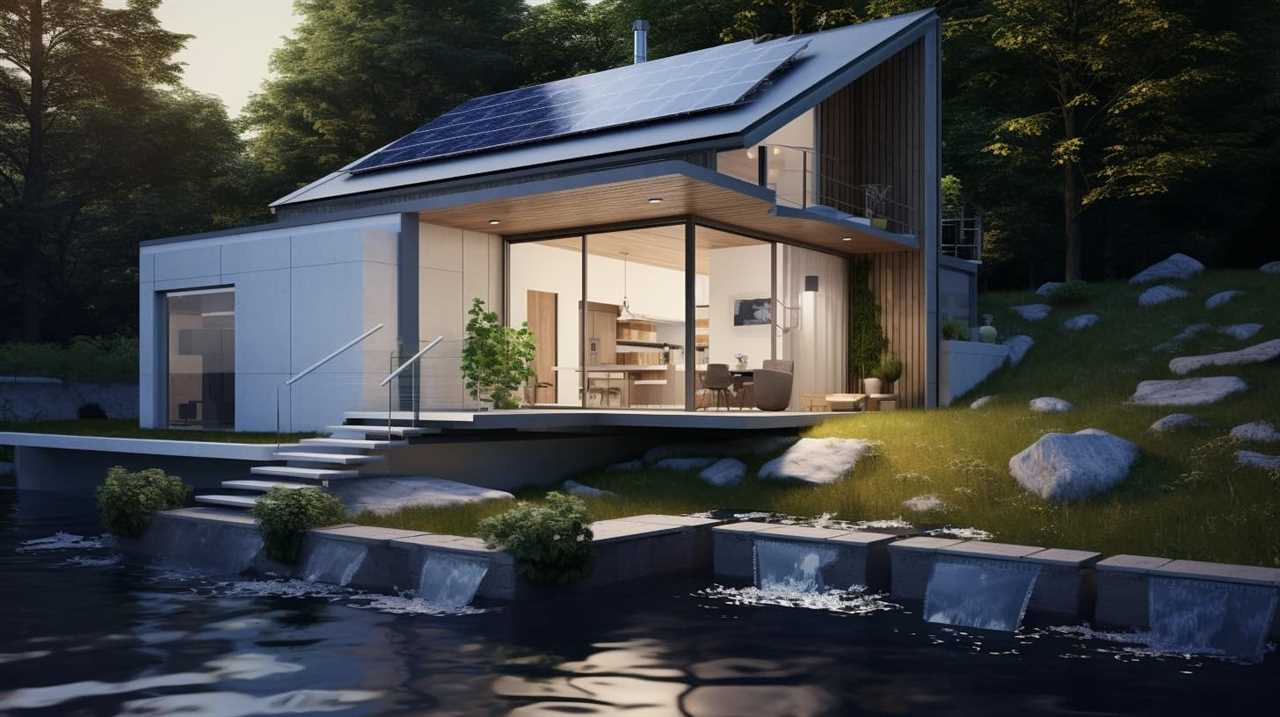
Additionally, consider these non-toxic alternatives to chemical solutions for pest control:
-
Neem oil: Derived from the neem tree, neem oil is a natural insecticide that can be effective against a wide range of pests. It works by disrupting the insect’s life cycle and repelling them from plants.
-
Insecticidal soap: Made from potassium salts of fatty acids, insecticidal soap works by suffocating pests on contact. It’s safe to use on most plants and can be an effective solution against white bugs.
-
Diatomaceous earth: This powdery substance is made from fossilized remains of diatoms and acts as a desiccant, drying out and killing insects.
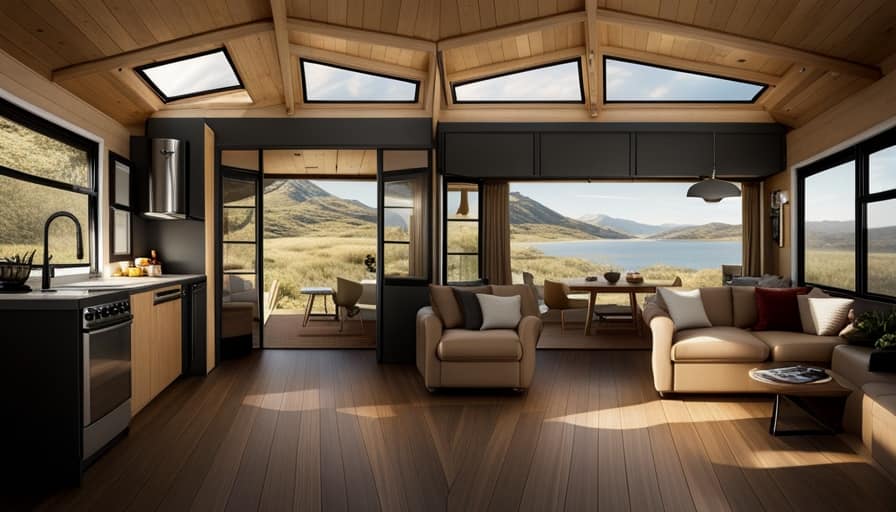
When using any chemical solution or non-toxic alternative, it’s essential to monitor the plants closely and repeat the treatment as necessary to maintain a bug-free environment. Professional pest control services can also provide expert guidance and assistance in achieving long-lasting results.
Preventing Future Infestations and Maintaining Healthy House Plants
To effectively prevent future infestations and maintain healthy house plants, I will implement a regular cleaning and inspection routine. This will help ensure that any signs of pests or diseases are detected early on and addressed promptly. Regularly cleaning the leaves and stems of my plants with a mild soap and water solution will help remove any dust or debris that can attract pests. Additionally, I will inspect the plants for any signs of infestation, such as white bugs or sticky residue on the leaves. To further enhance plant hygiene, I will also consider using beneficial insects, such as ladybugs or lacewings, which feed on common plant pests like aphids. By incorporating these practices into my routine, I can maintain healthy house plants and prevent future infestations.
| Regular Cleaning | Inspection Routine | Using Beneficial Insects |
| Remove dust and debris | Check for signs of infestation | Introduce ladybugs or lacewings to control pests |
| Promotes plant hygiene | Detect and address issues early | Natural pest control method |
| Prevents pest attraction | Maintain healthy house plants | Encourages ecosystem balance |
Frequently Asked Questions
Can These Tiny White Bugs Harm Humans?
Yes, tiny white bugs on house plants can harm humans. They can cause skin irritations and allergic reactions. It’s important to take steps to prevent infestations, such as regularly inspecting and cleaning your plants.
How Long Does It Take for Natural Remedies to Eliminate the Bugs Completely?
To completely eliminate the tiny white bugs using natural remedies, it typically takes a few weeks of consistent application. However, the effectiveness of these remedies can vary. It’s important to avoid common mistakes like under-applying or using incorrect remedies.
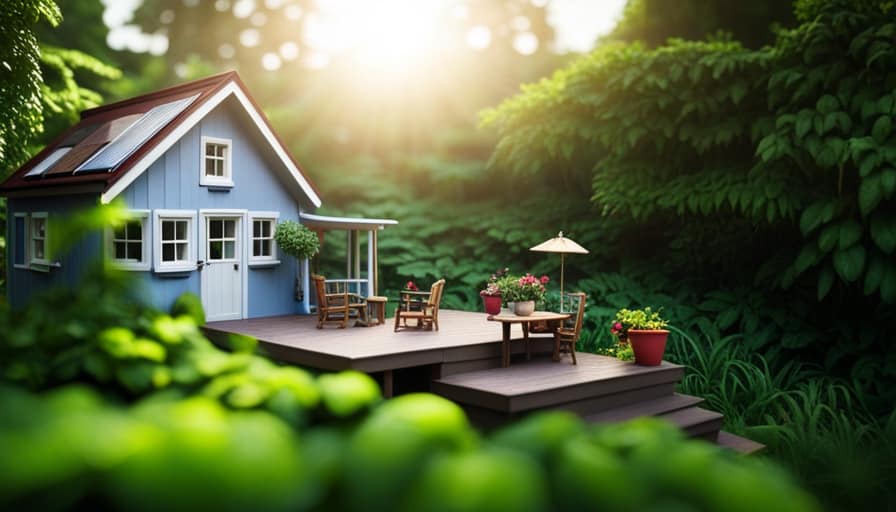
Are There Any Specific Types of House Plants That Are More Prone to Infestations?
Certain house plants, like lavender and marigolds, have natural repellent properties that can help prevent infestations. It’s important to choose plants that are known to repel bugs and to regularly inspect and clean your plants to avoid any potential infestations.
Can These Bugs Spread From One House Plant to Another?
Oh, the joy of tiny white bugs on house plants! Yes, these pests can spread from one plant to another. To control them, use insecticides and watch out for signs of infestation like sticky residue or wilting leaves.
How Often Should I Check My House Plants for Signs of Infestation?
I check my house plants for signs of infestation regularly to ensure their health. Common signs include tiny white bugs and yellowing leaves. Preventative measures like proper watering and cleaning can help keep plants bug-free.
Conclusion
In conclusion, taking care of our house plants goes beyond watering and sunlight. Identifying and eliminating tiny white bugs is a crucial part of maintaining a healthy environment for our plants.
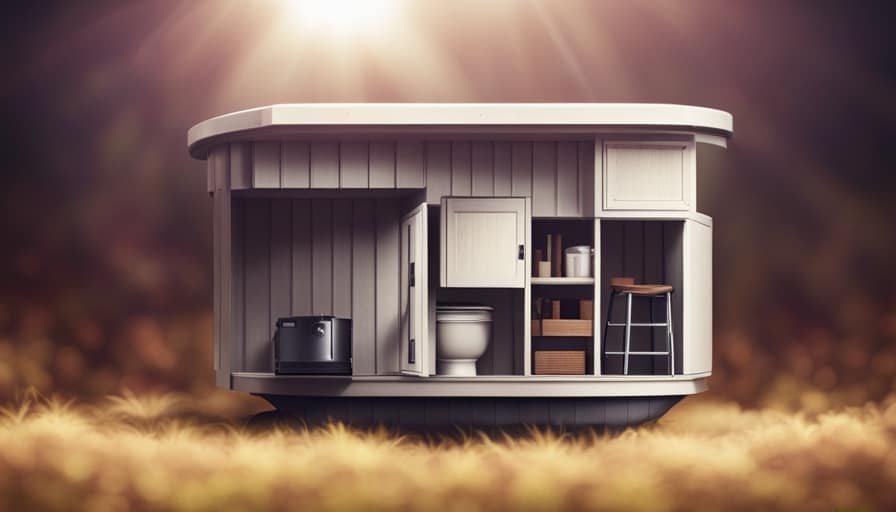
By understanding the causes of infestation and using natural or chemical remedies, we can ensure a bug-free environment. Remember, prevention is key, so regularly inspect your plants and take necessary measures to keep them thriving.
Happy gardening!
I’m Theodore, and I love tiny houses. In fact, I’m the author of Tiny House 43, a book about tiny houses that are also tree houses. I think they’re magical places where imaginations can run wild and adventures are just waiting to happen.
While tree houses are often associated with childhood, they can be the perfect adult retreat. They offer a cozy space to relax and unwind, surrounded by nature. And since they’re typically built on stilts or raised platforms, they offer stunning views that traditional homes simply can’t match.
If you’re looking for a unique and romantic getaway, a tree house tiny house might just be the perfect option.
Beginners Guides
How Do I Get Rid of Tiny Moths in My House

I have experienced the frustration of dealing with tiny moths flying around my food in the kitchen. But do not worry, I have a solution for you.
In this article, I’ll show you how to banish those pesky moths from your house for good. We’ll dive into identifying different moth species, understanding what attracts them, and simple prevention techniques you can implement.
Plus, I’ll share some natural remedies and professional options as a last resort. Say goodbye to those unwanted guests!
Key Takeaways
- Identifying the specific moth species is crucial for implementing targeted control measures.
- Moths are attracted to food sources, fabrics, and organic materials, so it’s important to store food in airtight containers and keep the house clean.
- Moths prefer dark, undisturbed areas to lay their eggs, so sealing cracks and openings in walls, windows, and doors can help prevent infestation.
- If natural remedies and DIY methods fail, it is advisable to seek professional pest control services for thorough inspection and tailored treatment plans.
Identifying the Culprits: What Type of Moth Is Invading Your Home
I can’t figure out what kind of moth is infesting my home. It’s frustrating not knowing the exact species, as different moths have different behaviors and habits. Identifying the culprits is crucial in order to effectively address the problem.

There are several common moth species that are known to invade homes, such as the Indian mealmoth, clothes moth, and pantry moth. Each species has distinct characteristics that can help with identification. Understanding their behavior is also important as it can give insights into their lifecycle and potential sources of infestation.
Moths are attracted to food sources, fabrics, and other organic materials. They can lay eggs in stored grains, textiles, or even pet food. By understanding the specific species and their behavior, it becomes easier to implement targeted control measures and prevent further infestations.
Understanding the Infestation: Why Are Moths Attracted to Your House
To effectively address the infestation, it’s essential to understand why moths are attracted to your house. Here are four reasons why moths may be flocking to your home:
-
Food sources: Moths are attracted to food, especially grains, cereals, and dried fruits. They can easily find their way into your pantry and feast on these items.
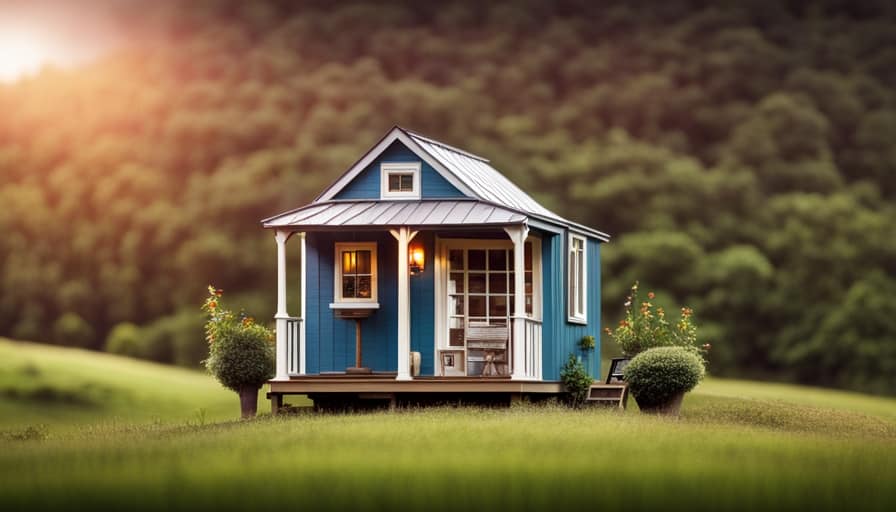
-
Moisture and humidity: Moths thrive in damp environments, making your house an ideal breeding ground if there are areas with high humidity or water leaks.
-
Suitable habitat: Moths are drawn to dark, undisturbed areas where they can lay their eggs undisturbed. This includes closets, attics, and basements.
-
Outdoor attraction: Moths can be attracted to your house from the outside, especially if you have outdoor lights that are left on at night.
Understanding moth behavior and their attraction to your house is crucial in preventing further infestation. By addressing these factors, you can take steps to keep moths at bay and protect your home.

Here are some moth prevention tips:
- Store food in airtight containers.
- Keep your house clean and free of crumbs or spills.
- Fix any leaks or moisture issues promptly.
- Use moth repellents or traps in vulnerable areas.
Prevention Is Key: Simple Steps to Keep Moths From Entering Your Home
Prevention is essential, so I’ll share some simple steps to keep moths from entering your home. By taking a proactive approach, you can create an inhospitable environment for moths and minimize the risk of infestations. One effective method is to use moth repellent products, such as sachets or sprays, in areas where moths are commonly found. These repellents contain chemicals that deter moths from entering your home. Additionally, it is crucial to seal any cracks or openings in your walls, windows, and doors. Moths can easily slip through these tiny gaps, so using caulk or weatherstripping can help keep them out. Regularly vacuuming and cleaning your home can also eliminate moth eggs or larvae that may be hiding in carpets or corners. By implementing these preventive measures, you can ensure a moth-free home environment.
| Steps to Keep Moths Away | |
|---|---|
| Use moth repellent products | Seal cracks and openings |
| Regularly vacuum and clean |
Natural Remedies: Non-Toxic Solutions to Get Rid of Moths
One effective way to get rid of moths naturally is by using a combination of vinegar and water to create a non-toxic moth spray. Here are some natural remedies you can try:
-
Vinegar and water spray: Mix equal parts vinegar and water in a spray bottle. Spray this solution on areas where moths are present, such as closets, drawers, and pantry shelves. The strong odor of vinegar repels moths and prevents them from laying eggs.
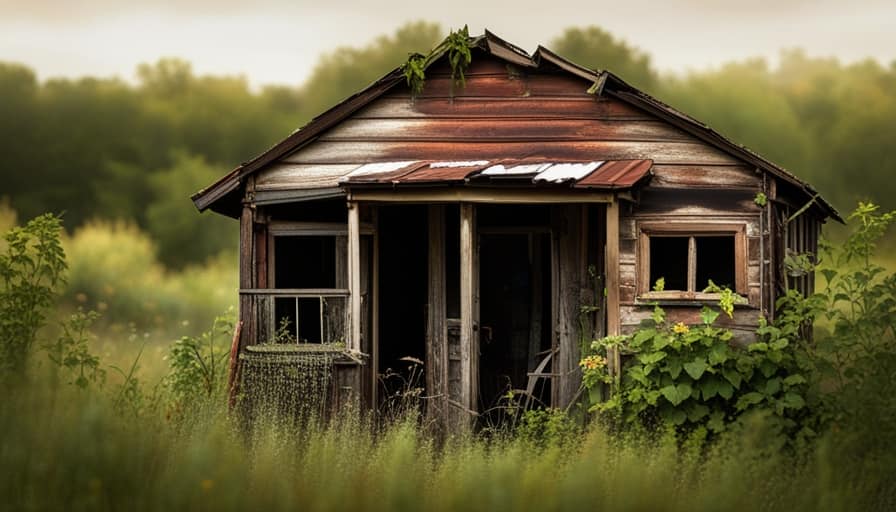
-
Cedar chips: Moths dislike the smell of cedar, so placing cedar chips in your closets and drawers can help deter them. You can also use cedar oil or cedar sachets for the same effect.
-
Homemade traps: Create simple moth traps by placing a mixture of vinegar, sugar, and dish soap in a bowl. The sweet scent attracts moths, and the dish soap traps them when they try to land on the mixture.
-
Lavender sachets: Moths are repelled by the fragrance of lavender. Place dried lavender in small sachets and tuck them in your clothing drawers or hang them in your closets.
These natural repellents and homemade traps can help you get rid of moths without using toxic chemicals. However, if these methods fail to eliminate the infestation, it may be time to consider professional pest control options.

Last Resort: When All Else Fails, Professional Pest Control Options
If I’ve exhausted all other options, I’ll contact a professional pest control service to eliminate the moth infestation in my house. While natural remedies and DIY methods can be effective for small infestations, sometimes the problem persists or worsens despite our best efforts.
This is when it’s crucial to call in the experts. Professional pest control services have the knowledge, experience, and resources to effectively eradicate moth infestations. They’ll conduct a thorough inspection of your home to identify the source of the infestation and develop a tailored treatment plan.
The benefits of hiring professionals include their expertise in identifying different moth species, their access to specialized equipment and pesticides, and their ability to ensure the complete eradication of the infestation.
When all else fails, it’s best to rely on the expertise of professional pest control services to rid your home of those persistent moths.

Frequently Asked Questions
Can Moths Cause Any Damage to My House or Belongings?
Moths can cause damage to fabrics, carpets, and stored food. It’s important to address a moth infestation promptly. Using natural moth repellents, like lavender or cedar, can help deter them from your house and protect your belongings.
Are All Types of Moths Attracted to Homes, or Are There Specific Species That Are More Common?
In the world of moths, certain species have a penchant for our cozy homes. Understanding the types commonly found indoors can help us prevent the dreaded infestations from taking hold in the first place.
How Long Does It Usually Take to Get Rid of a Moth Infestation Using Natural Remedies?
Using natural remedies to get rid of a moth infestation can be effective, but the time it takes varies depending on the severity. Common signs of an infestation include sightings of adult moths and larvae, as well as damaged fabrics or food products.
Can Moths Carry Diseases or Pose a Health Risk to Humans?
Moths can transmit diseases to humans, so it’s important to take precautions. Individuals with allergies or asthma may experience respiratory issues due to moth infestations in homes.

Are There Any Specific Plants or Herbs That Repel Moths and Can Be Used as Natural Remedies?
Using natural moth repellents, such as specific plants and herbs, offers several benefits over chemical alternatives. Creating a moth repelling garden with lavender, rosemary, and mint can effectively deter moths from your house.
Conclusion
In conclusion, it’s essential to address the presence of these minuscule pests in your home promptly. By identifying the specific type of moth invading your space and understanding their attraction, you can take preventive measures to keep them at bay.
Utilizing natural remedies and seeking professional pest control services as a last resort will ensure a moth-free environment without compromising your household’s well-being.
Stay vigilant and employ these effective methods to bid farewell to these unwelcome visitors.

I’m Theodore, and I love tiny houses. In fact, I’m the author of Tiny House 43, a book about tiny houses that are also tree houses. I think they’re magical places where imaginations can run wild and adventures are just waiting to happen.
While tree houses are often associated with childhood, they can be the perfect adult retreat. They offer a cozy space to relax and unwind, surrounded by nature. And since they’re typically built on stilts or raised platforms, they offer stunning views that traditional homes simply can’t match.
If you’re looking for a unique and romantic getaway, a tree house tiny house might just be the perfect option.
Beginners Guides
How Difficult Is It to Build a Tiny House in Colorado Springs

I understand your concerns about building a tiny house in Colorado Springs. However, I can assure you that with the proper knowledge and guidance, it is completely achievable.
In this article, I’ll walk you through the zoning regulations, permitting process, finding suitable land, and navigating building codes. We’ll also discuss securing financing, budgeting, and dealing with utilities.
So, if you’re ready to embark on this rewarding journey, let’s dive in and make your tiny house dreams a reality.
Key Takeaways
- Zoning regulations and building permits are required for constructing a tiny house in Colorado Springs.
- Finding suitable land that complies with zoning regulations is important for placing a tiny house.
- Familiarizing oneself with local building codes and regulations, and following safety guidelines is necessary.
- Researching various financing options and presenting a detailed budget can increase the chances of securing financing for building a tiny house.
Zoning Regulations and Permitting Process
I’ll need to research the zoning regulations and permitting process before starting to build my tiny house in Colorado Springs. Understanding these regulations is crucial as they dictate where and how I can construct my tiny house.
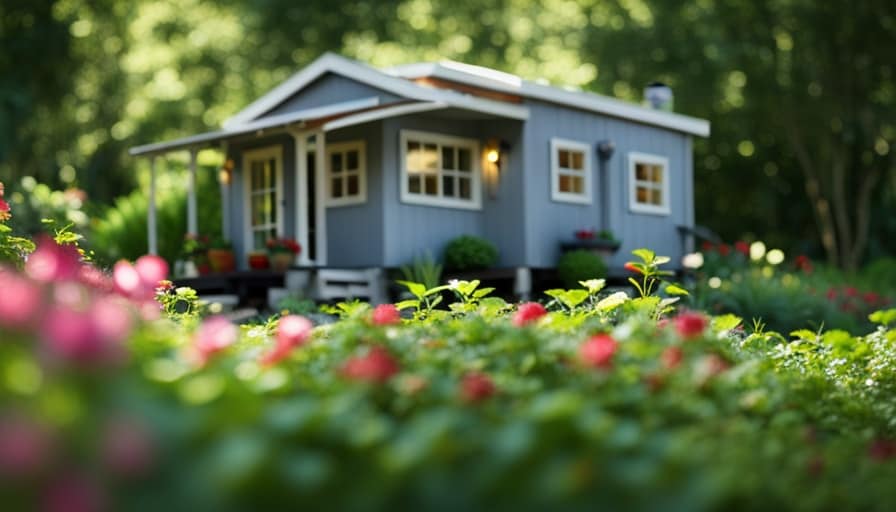
One key aspect to consider is the impact of tiny houses on property values. While some argue that they can decrease property values, others believe that they can actually increase them by adding diversity and uniqueness to the community.
Additionally, one of the challenges I may face is finding legal parking for my tiny house in urban areas. Many cities have restrictions on where tiny houses can be parked, making it essential to find suitable parking options that comply with local regulations.
With these factors in mind, I can now move on to finding suitable land for my tiny house.
Finding Suitable Land for Your Tiny House
After researching the zoning regulations and permitting process, it’s now time to start finding suitable land for my tiny house in Colorado Springs.
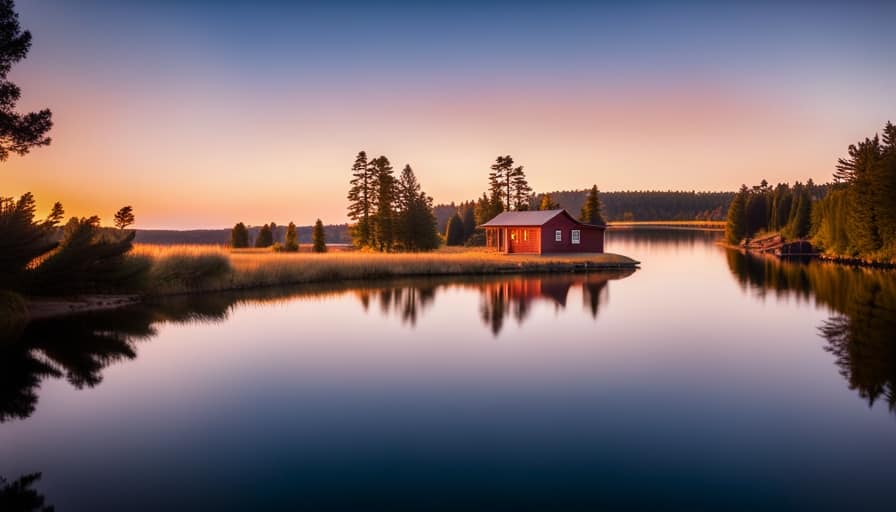
When it comes to finding land for a tiny house, there are a few important factors to consider. One of the major challenges is land availability constraints. Due to the increasing popularity of tiny houses, finding land that allows for their construction can be difficult. It’s important to do thorough research and explore different options, such as contacting local real estate agents or checking online platforms that specialize in tiny house-friendly land.
Additionally, environmental impact considerations are crucial. It’s important to choose a location that minimizes the impact on the surrounding environment and aligns with sustainable practices.
Taking these factors into account will ensure that I find a suitable piece of land for my tiny house in Colorado Springs.
Navigating Building Codes and Inspections
When it comes to navigating building codes and inspections for my tiny house in Colorado Springs, I’ll need to familiarize myself with the local regulations and ensure compliance throughout the construction process. Understanding local regulations is crucial to avoid any legal issues and ensure that my tiny house meets all the necessary requirements.
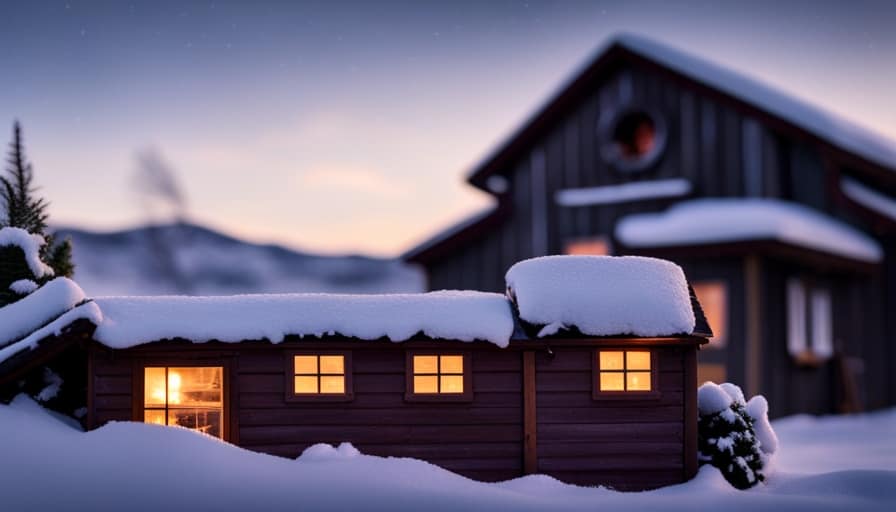
This includes obtaining proper permits, adhering to zoning laws, and following safety guidelines. To ensure a smooth process, I may consider hiring a professional builder who’s well-versed in local building codes and has experience with tiny house construction. Their expertise and knowledge will help me navigate the intricacies of the regulations and ensure that my tiny house is built according to the highest standards.
By understanding the local regulations and working with a professional builder, I can confidently proceed with my project while complying with all necessary codes and inspections.
With the building codes and inspections in mind, the next step is to secure financing and budget for my tiny house project.
Securing Financing and Budgeting for Your Project
To successfully secure financing and budget for my tiny house project in Colorado Springs, I frequently need to research various lenders and explore different funding options. Securing loans for a tiny house can be challenging, as it’s a unique type of project and not all lenders may be familiar with it. However, there are lenders who specialize in providing loans specifically for tiny houses.
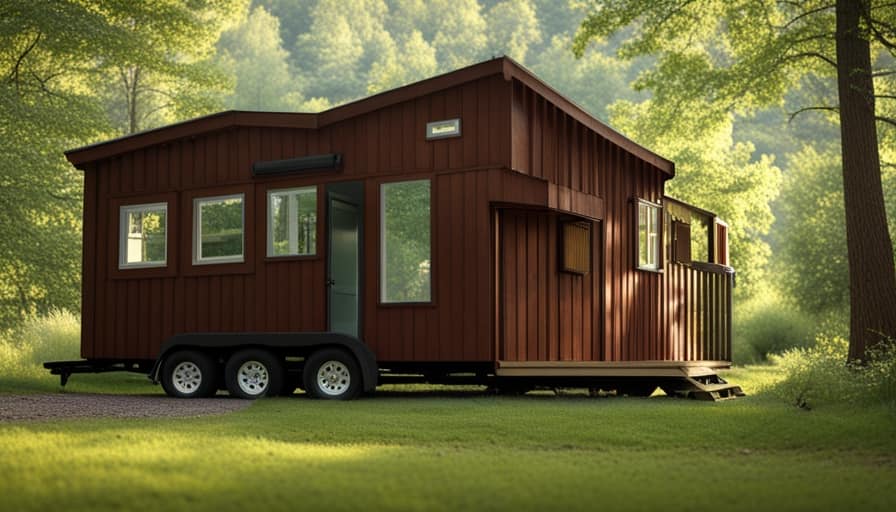
It’s important to gather all the necessary documents and information required by the lenders, such as the cost estimation of the project, including materials, labor, and any additional expenses. By presenting a thorough and well-prepared budget, it increases the chances of securing financing for the project.
Once the financing is secured, it becomes easier to move forward with the next steps of the project, such as dealing with utilities and exploring off-grid options.
Dealing With Utilities and Off-Grid Options
I can explore both traditional utility options and off-grid alternatives when dealing with electricity, water, and sewage in my tiny house in Colorado Springs.
When it comes to off-grid power, there are several options available. Solar panels are a popular choice, harnessing the energy of the sun to generate electricity. Wind turbines can also be used to generate power, particularly in areas with consistent wind patterns. Additionally, hydroelectric power can be harnessed if there’s a suitable water source nearby.
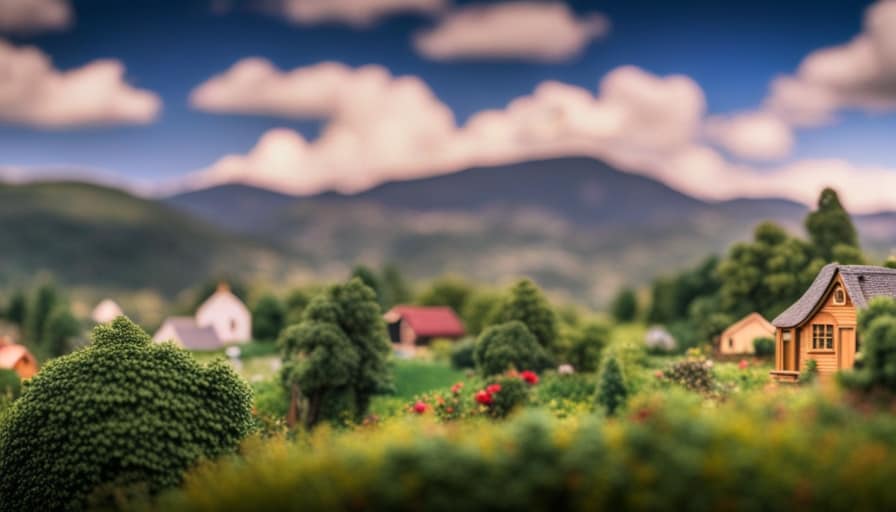
As for water sources, rainwater collection systems can be installed to capture and store rainwater for household use. Digging a well is another option, although it may require permits and additional expenses.
Lastly, composting toilets can be used to manage sewage in an off-grid tiny house, eliminating the need for traditional plumbing systems.
Frequently Asked Questions
What Are the Advantages of Building a Tiny House in Colorado Springs Compared to Other Cities in Colorado?
Building a tiny house in Colorado Springs has many advantages compared to other cities in Colorado. The city has a thriving tiny house community, supportive regulations, and an abundance of natural beauty to enjoy.
Are There Any Specific Design Requirements for Tiny Houses in Colorado Springs?
There are specific design requirements for tiny houses in Colorado Springs, including building regulations that must be followed. It is important to be knowledgeable about these requirements to ensure a successful and compliant build.

How Long Does the Zoning and Permitting Process Usually Take in Colorado Springs?
The zoning and permitting process in Colorado Springs can be a challenge. It takes time to navigate through the requirements and obtain the necessary approvals. However, with proper guidance and patience, it is possible to build a tiny house in Colorado Springs.
Are There Any Restrictions on Living in a Tiny House on Wheels in Colorado Springs?
Living in a tiny house on wheels in Colorado Springs comes with restrictions. Tiny house parking options are limited, and building codes for tiny houses must be followed. It can be challenging, but not impossible.
Can I Rent Out My Tiny House as an Airbnb in Colorado Springs?
Renting out a tiny house as an Airbnb in Colorado Springs is possible, but there are regulations to follow. It’s important to familiarize yourself with local zoning laws and obtain any necessary permits before listing your tiny house as a rental property.
Conclusion
Building a tiny house in Colorado Springs may be challenging due to zoning regulations, finding suitable land, navigating building codes, securing financing, and dealing with utilities.
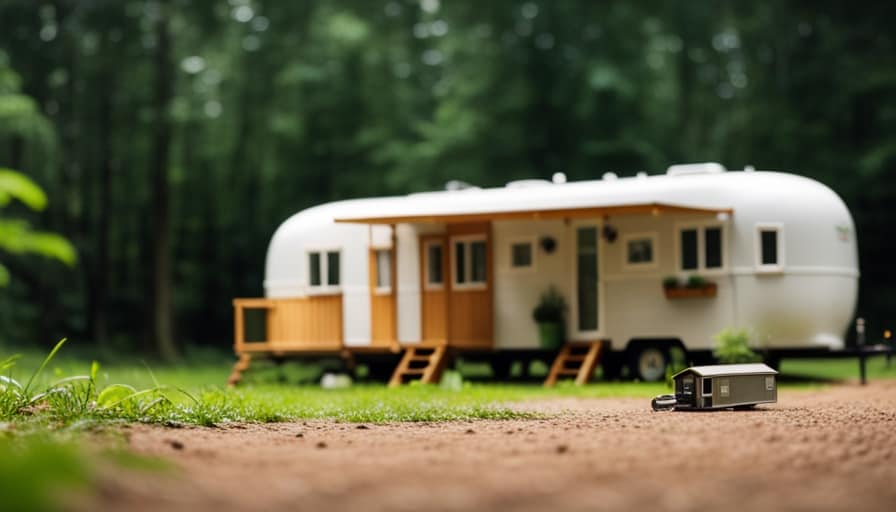
However, with determination and thorough research, it’s possible to overcome these obstacles.
For example, Sarah, a Colorado Springs resident, successfully built her own off-grid tiny house by carefully selecting land outside city limits, obtaining the necessary permits, and utilizing solar power.
Her experience demonstrates that with proper planning and knowledge, building a tiny house in Colorado Springs can be a rewarding and sustainable endeavor.
I’m Theodore, and I love tiny houses. In fact, I’m the author of Tiny House 43, a book about tiny houses that are also tree houses. I think they’re magical places where imaginations can run wild and adventures are just waiting to happen.
While tree houses are often associated with childhood, they can be the perfect adult retreat. They offer a cozy space to relax and unwind, surrounded by nature. And since they’re typically built on stilts or raised platforms, they offer stunning views that traditional homes simply can’t match.
If you’re looking for a unique and romantic getaway, a tree house tiny house might just be the perfect option.
-

 Beginners Guides2 weeks ago
Beginners Guides2 weeks agoHow To Buy A Tesla Tiny House
-

 Energy Efficiency2 months ago
Energy Efficiency2 months agoBest Tiny Homes For Cold Climates
-

 Beginners Guides1 week ago
Beginners Guides1 week agoTiny House Nation Where Are They Now Stephanie
-

 Tiny House Resources (e.g., legalities, cost, insurance, FAQs)2 months ago
Tiny House Resources (e.g., legalities, cost, insurance, FAQs)2 months agoDo Tiny Homes Need Planning Permission?
-

 Beginners Guides3 weeks ago
Beginners Guides3 weeks agoFrom The Show Tiny House Nation How Many Keep Their Tiny House?
-

 Beginners Guides2 months ago
Beginners Guides2 months agoUsing a Climbing Net For Treehouse Construction
-

 Beginners Guides2 months ago
Beginners Guides2 months agoHow to Build a Treehouse Without Drilling Into the Tree
-

 Beginners Guides3 weeks ago
Beginners Guides3 weeks agoTiny House Nation Who Pays For The Houses




